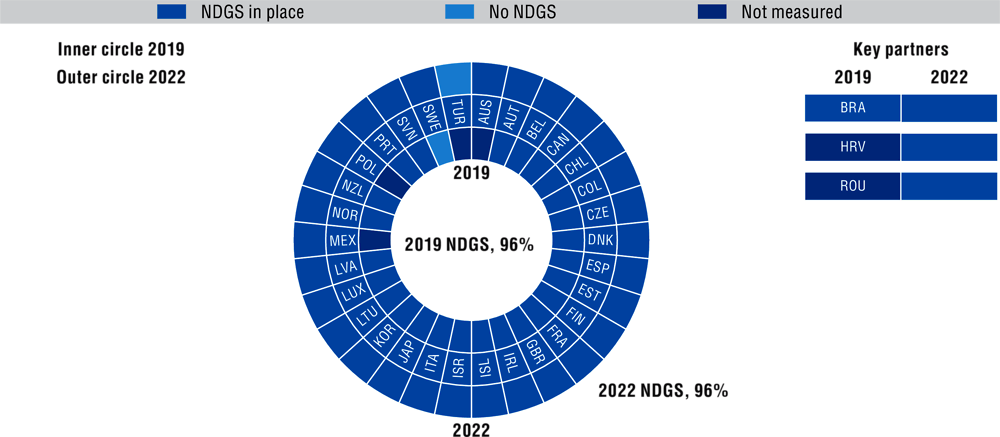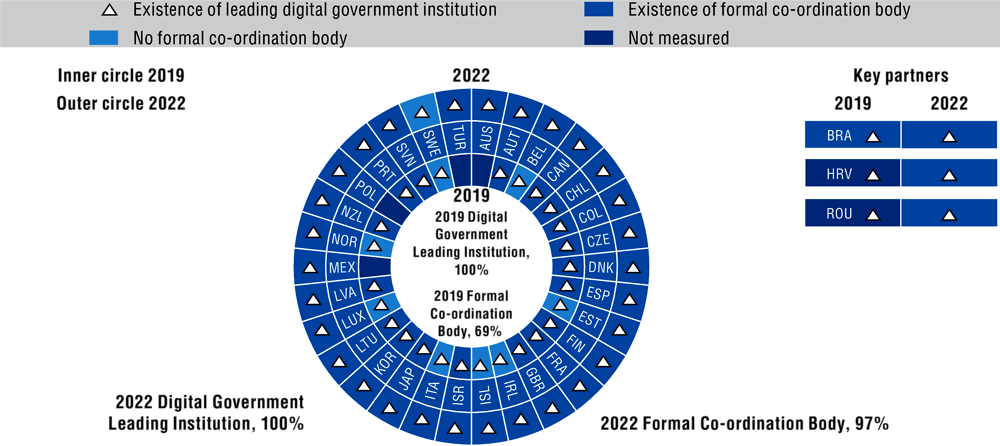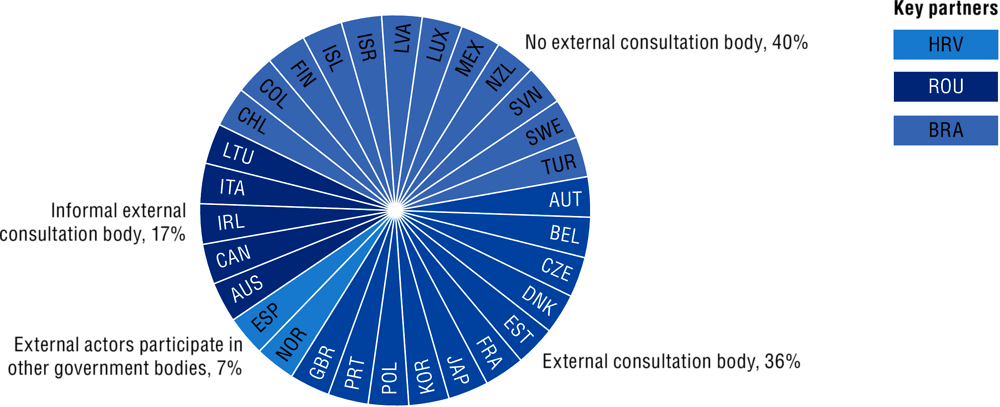The public sector requires to be digital by design to fully adapt and take advantage of the digital age for better serving people, improving policy making and maximise government performance (OECD, 2020a). Becoming digital by design requires: 1) setting a strategic vision and clear mandate for digital government; 2) securing solid organisational leadership to steer digital government policies and actions; and 3) establishing effective co-ordination and collaboration within and outside the public sector for government-wide digital transformation in a coherent and inclusive manner.
OECD countries continue to demonstrate their clear strategic vision for digital government through the development and implementation of national digital government strategies (NDGSs), with common priorities such as increasing the accessibility and proactive delivery of services, and treating data as a key strategic asset to create public value. Almost all countries (29 out of 30, 97%) had an NDGS in place in 2022. Since 2019, Sweden has established a common ambition for digital government through a dedicated NDGS. Australia, Mexico, and Poland, which did not participate in the 2019 survey, confirmed they had an NDGS in 2022 (Figure 9.1).
Organisational leadership and cross-government co-ordination are fundamental for delivering coherent digital government policies across the public sector. Survey results highlight that governments continue to consolidate leadership and co-ordination for digital government. In both 2019 and 2022, all countries with data available had a public sector institution responsible for leading decisions on digital government at the central/federal level and co-ordinating their implementation. More notably, countries have made considerable progress in establishing formal co-ordination bodies or mechanisms responsible for steering digital government policies and initiatives in the public sector, such as Korea’s e-Government Promotion Committee or Luxembourg’s Inter-ministerial Council for Digitisation. In 2019, 18 out of 26 countries (69%) had such a body or mechanism in place, rising to 29 out of 30 (97%) in 2022. This means that seven countries have since established one (Figure 9.2).
Mature governance of digital government also demands the engagement of external stakeholders to build collaborative and user-centred policies and services (OECD, 2021). OECD countries could do more to foster meaningful co-ordination mechanisms with external stakeholders. In 2022, 11 out of 30 countries (36%) had established an external advisory or consultation body for digital projects in the public sector, 5 (17%) have an informal consultation body, and in 2 (7%), external stakeholders participate in the formal co-ordination mechanism mentioned above. However, 12 out of 30 (40%) still do not have any such body (Figure 9.3).



